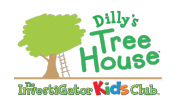
24 Apr Where the Wild Things Are: Developing Rich Oral Vocabulary
We all know that reading to and with children from the earliest ages is a critical component of setting them up for academic success. But do you ever feel like you’re not sure what to do when the story ends? How do you make sure the experience is not only exposing them to print, but actually helping them learn? One of the easiest ways to extend any read-aloud into a learning opportunity is to use the story as a springboard for developing oral vocabulary.
Using a story to introduce vocabulary piques your child’s interest and gives him a context in which to apply his learning. Some stories contain rich vocabulary words, which is great, but even if they don’t, they have hundreds of rich concepts that you can work with.
Choose Which Words to Teach
First, you have to decide which vocabulary words are worth explicitly teaching. Not all words are worth your time. Basic words don’t usually require instruction. Children can easily infer these meanings from pictures and from the frequency in which they occur in speech. So, don’t spend your time on words such as house, baby, happy, etc. Highly academic words are used only in specific contexts and have limited application, so save those words for your child’s future teachers. Don’t spend a great deal of time on words such as chrysalis, equation, peninsula.
The vocabulary words you do want to spend time on (and have fun with!) are what researcher Isabel Beck termed, “Tier 2 words.” These are words that are interesting and useful. They appear often in print and can be applied to a variety of contexts. They represent concepts the child already understands. They are the words that make the difference between a bland block of text and an inspirational passage. Words such as delightful, absurd, or industrious are examples of tier 2 words.
In the case of Where the Wild Things Are, I’ve chosen one vocabulary word from the story itself and then three vocabulary words that describe concepts about the story.
- mischief (from the story)
- ferocious (about the story)
- mesmerized (about the story)
- commotion (about the story)
Increase your child’s oral vocabulary with words that are interesting and useful.
Introduce the Words
Once you’ve chosen the words to teach, introduce each one in a playful and meaningful way. Start with, “In the story…” to give the word context, then provide a conversational explanation for each word. Finally, act out the word with your child.
- In the story, the author says Max put on his wolf suit and made mischief of one kind and another. If you make mischief, you do silly things that can cause trouble. How would we look if we were making mischief?
- In the story, the author describes the monsters roaring and gnashing their teeth. The sound ferocious. If something is ferocious, it is wild and very scary. Let’s make a ferocious look!
- In the story, Max says, “Be still!” and all of the monsters get quiet. It’s like they are mesmerized. If you are mesmerized, all of your attention is on one thing and nothing else. Let’s pretend like we are mesmerized.
- In the story, Max and the wild things start a wild rumpus. In these pictures, it looks like a big commotion. When there is a commotion, there is a lot of noisy things happening and it can be disturbing. How would we look if we were making a commotion?
Reinforce the Words
Over the next few days, use the words multiple times in multiple contexts. Children need 7-10 exposures to a word before they learn it, so look for as many opportunities as you can to reinforce the new vocabulary. Use the following strategies to make these playful and fun!
This or That
- Which is more mischievous: A monkey trying to distract someone so he can steal his food or a dog laying in the sun?
- Which is more ferocious: a mouse or a grizzly bear?
- What is more likely to mesmerize someone: a movie or a blanket?
- Where would a commotion more likely be: at a party or at a library?
Vocabulary in Pictures
- Show a series of pictures of kids, at least one with a mischievous look: Which of these kids might be making mischief?
- Show a series of superheroes and villains, at least some that are scary-looking. Which of these characters look ferocious?
- Show a series of people, at least one that looks mesmerized by a book. Which of these people could be mesmerized?
- Show a series of sporting pictures, at least one with a big group making a lot of noise. Which of these shows a commotion?
Act it Out
- Let’s pretend like we are making mischief in the kitchen.
- How would it look to be ferocious?
- Let’s take turns mesmerizing each other.
- Let’s cause a commotion in the living room.
Personalize It
- Tell me about a time when you were mischievous.
- What do you think is ferocious?
- What mesmerizes you?
- Have you ever been a part of a commotion? Explain.
Notice that in the examples shown, the words are used in a variety of contexts so your child learns over the course of the week that mischief can be made by animals or humans, that one can be mesmerized by a book or a movie, etc. The more contexts you use, the more nuanced your child’s understanding of the word will be.
You can use the different strategies as often as you like. Keep it fun and playful, even silly. Move from the multiple-choice strategies (This or That and Vocabulary in Pictures) to the more open-ended ones (Act it Out and Personalize it) as your child gains understanding throughout the week.
Notice that you can use the word in different forms. You don’t need to explain the different varieties. Children will develop oral vocabulary in the same way they learn to speak, by emulating what they hear, so just use the words naturally.
Finally, notice that all of these activities are oral. Your child does not need to know how to write and you should not expect your child to be able to read these words. The intent is to develop oral vocabulary, giving rich, robust words to concepts your child already knows. Once your child learns to decode, then these words will be easily read and understood.
Don’t be afraid of using “big words” with young children. If they understand the concept of happy, for example, there is no reason they can’t learn a variety of “labels” to convey that emotion: delighted, ecstatic, joyful, etc. Your child will love learning words that make them sound grown-up. And when they start to encounter these words in print, they will comprehend faster and more deeply than those who do not have a strong oral vocabulary. So, let Where the Wild Things Are be a starting point for you and your child. If you like it, use another picture book to launch a new set of oral vocabulary week after week!

Sorry, the comment form is closed at this time.